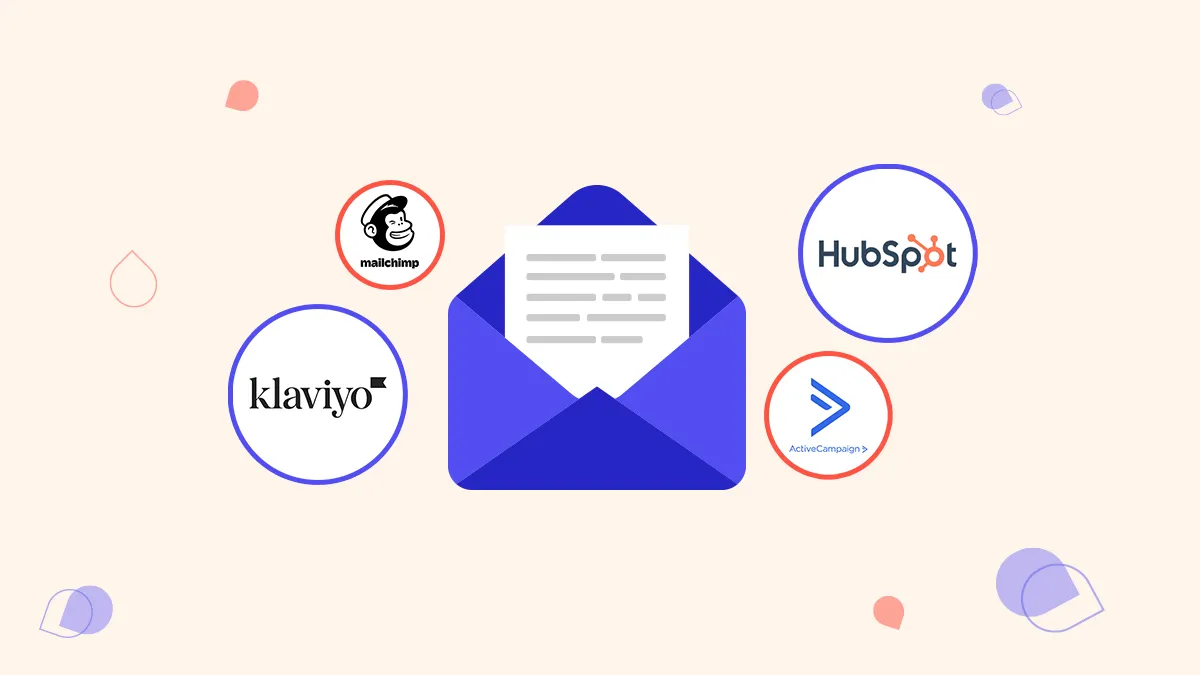
Automated email follow-up software can help businesses increase conversion rates, save time, and streamline their outreach campaigns. Companies in the fast-paced digital landscape of today largely rely on positive communication to get leads, retain customers, and boost income. This article looks at the ins and outs of automated email follow-up software, its features, benefits, top tools, and best practices for installation optimized for SEO to help you make intelligent decisions.
Definitions of Automated Email Follow-Up Software
Automated Email Follow-Up Software aim to send pre-scheduled, trigger-based emails to recipients based on their behavior or inactions. These programs automate tiresome email tasks by sending reminders, following up with prospects who haven’t responded, or tending to customers post-buy. Automation enables businesses to maintain continual communication free from human intervention, thereby avoiding any possibility to pass through the gaps.
How is it doing?
Automated email follow-up systems operate based on predetermined criteria and triggers. For instance, should a lead click a link in your newsletter but not make a purchase, the program can send a targeted follow-up email at a certain interval. These solutions interact with email systems, CRM systems, and other marketing technologies to create perfect procedures.
Important components consist of:
Starting the follow-up series are actions like opening an email, clicking a link, or abandoning a cart.
Emails sent in succession at defined intervals keep the recipient engaged.
Using recipient data—name, company—personalizing emails for relevance enables one to
Monitoring data, including open rates, click-through rates, and conversions, helps one optimize campaigns.
The Crucially Important Nature of Automatic Email Follow-Up Tools
One cannot truly exaggerate the importance of Automated Email Follow-Up Software. Studies indicate that just 2% of purchases follow the initial contact; 60% of customers say “no” four times before saying “yes.” Automation is very important as manual follow-ups take time and are prone to errors. Businesses want these tools for these purposes:
saves time and raises performance level.
Following hundreds of leads by hand is impractical. Automated systems manage repetitive tasks, enabling staff to focus on high-value tasks, such as content generation or deal closure. Rebump and Mailshake, for example, let users start sequences once and let the system handle the rest.
Improves Conversion Values About Automated Email Follow-Up Software
Studies show that eighty percent of transactions need five to twelve follow-ups. Automated follow-up emails maintain your brand first and gradually push prospects toward conversion. Behavior-based triggers ensure email relevancy and thereby increase the likelihood of a response.
enhanced customizing
Modern technologies mix artificial intelligence and data analytics to produce personalized emails meant for specific recipients. Rebump’s AI-driven sequences, for example, personalize follow-ups depending on the narrative of your company and recipient behavior, therefore enhancing connections.
reduces client turn-off
Post-purchase follow-ups with onboarding emails or feedback requests increase customer retention and happiness. By ensuring customers utilize your product, automated emails with support tools or training may help to lower turnover.

Key Features of Automated Email Correspondence Systems
Choosing the right software requires evaluating characteristics suited for your business’s needs. These are some crucial factors:
1.One on Integration for CRM
Perfect integration with CRMs like Salesforce or HubSpot offers easy data flow, which is assured to manage leads and target outreach. Tools like FollowUp.cc and QuickMail interface with extensively used CRMs, provide optimum productivity by themselves.
2. Automobile Sequences and Triggers
Most importantly, multi-step email sequences dependent on triggers—such as no reply and link click—can be designed. The automation builder provided from ACTIVE Campaign offers “if/then” logic and wait rules for complex procedures.
3. Personalism and A/B testing
Better are the open and click-through rates of customized emails. Look for tools for dynamic content insertion and A/B testing to optimize subject lines and email text. Lemli’s and Smartlead.ai excel in elements of customization tools.
4. Metrics and Reporting
Comprehensive information on open rates, click-through rates, and conversions may help campaigns be strengthened. Prospect participation is tracked by Sales handy and Smartlead.ai under full reporting.
5. Deliverability of Emails
To assist in preventing spam folders, choose tools with email warm-up and spam trigger avoidance. QuickMail’s auto-warmup technology helps cold outreach deliverability.
6. User Interface Approachable
A good interface reduces the learning curve. MailerLite is recommended for beginners because of its low complexity and large free plan.
7. Reasonable Scalability and Prices
Small companies can look for technologies with free trials, flexible pricing, or free programs. For businesses of all sorts, Mailchimp and Rebump provide scalable solutions.
Top five automated email follow-up initiatives set for 2025
Here is a comprehensive list of five top tools based on present ratings and features to help you decide which best fit:
1.Rebound
Rebump is unique in simplicity and personalization driven by artificial intelligence. Its most recent purpose is to assess the state of your company and create tailored follow-up sequences, thus allowing tone, length, and emoji modification. Rebump is ideal for solopreneurs and small businesses as it relates to Gmail and offers comprehensive statistics.
Among the advantages are low pricing, artificial intelligence customization, and easy use. Cons: Not as advanced as corporate tools in many aspects. Prices start at five bucks a month.
Perfect for small businesses and independent contractors.
2. Initiated campaign
Active Campaign is a powerhouse for advanced automation needs. Its automation builder allows complicated processes with “if/then” thinking, enabling businesses to achieve diverse marketing goals. Moreover, it offers great CRM integration and analytics.
Advantages include advanced automation, various integrations, and free trial access.Cons: smaller businesses pay more; their learning curve is longer.Monthly rates range from $29. Perfect for middle-sized to large businesses.
3. Smartlink.AI
Designed for scaled cold email outreach, Smartlead.AI enables thousands of daily emails to be sent. It offers behavior-based sub-sequences, A/B testing, and integrations made possible by often-used technologies. Its analytics allow avoiding spam flags, thereby guaranteeing outstanding delivery.
Pros: scalability, tools for spam protection, and great support.
Cons: Learning curves of beginners.Prices start at $39/month.Ideal for B2B advertisers and sales teams.
Fifth,
4.Mailshake
Milkshake simplifies follow-up tasks by using pre-made templates and trigger-based emails. It provides linkages with CRM and multichannel outreach—that is, phone and social media. Startups particularly value it for its affordability. Simple, reasonably priced, proven designs are definitely better.
Cons: Not many advanced automated features. The monthly price starts at $59. Best for startups and small teams.
5.Following Up.cc
For GSuite consumers, FollowUp.cc offers scheduled reminders, automated sequences, and snooze options in lightweight form. Its real-time email notifications help customers to follow up at ideal times.
One advantage is a free trial and easier Gmail connection.
Cons: Only GSuite; few advanced tools.
Prices: Start at $19 every month.
Perfect for users of GSuite and professionals.
Benefits of Automated Email Follow-Up Software
Using these tools provides actual benefits that support business growth:
Improved Leader Development
Drip Digital marketing and educational tools help leads over time, thereby building trust and engagement. For example, automated onboarding letters might enable new members to negotiate your offering, hence increasing retention.
Scalable Public Opinion
Smartlead.ai allows businesses to target large audiences without sacrificing uniqueness by enabling them to send hundreds of emails daily.
Better relationship with clients
Follow-up emails or feedback requests after a purchase help strengthen customer relationships. Automated systems provide timely communication guaranteed to enhance the customer experience.
Monetary Marketing
Affordable rates and free plans—like Mailer Lite and Repump—allow small businesses to adopt automation, therefore generating a notable return on investment as compared to human interaction.
Guidelines for Making Use of Automated Email Follow-Up Tools
Apply these SEO-boosting suggestions to make your follow-up efforts more successful:
1. Segment Your Audience
Organize recipients according to their behavior, demographics, or interests to guarantee that the communications are appropriate. Send emails on cart abandonment to e-commerce clients and onboarding to new members, for instance.
2. Write interesting topic lines.
Subject lines define open rates. Create unique, action-oriented subject lines like “Don’t Miss Out on Your Exclusive Offer! A/B test differentxperiment versions.
3. Maintaining Email Deliverability
Use email warm-up techniques to improve deliverability; eliminate spam trigger words; maintain a clean email list. Often used to rapidly fix issues and track bounce rates.
4.Balance automation with a human touch.
While automation saves time, excessively robotic emails might repel recipients. One may provide a personal touch by customizing content and avoiding mass-produced templates.
5. Test and Improve
Track performance with data, then refine campaigns. See which of send time, content, and different email frequency communicates with your audience.
6. Follow guidelines.
Check privacy laws, including GDPR, CAN-SPAM, and others. Retaining trust calls for respect of recipient preferences and provision of unsubscribed options.
Challenges and Approaches to Overcome Them
While automated email follow-up systems are very efficient, issues may arise:
1.Technical Inquiries
Integration or setup issues could throw off procedures. Test integrations before expanding using user-friendly solutions with consistent support like MailerLite or Rebump.
2.Overautomation
Too many emails might overwhelm their recipients. Guarantee relevance by controlling follow-up frequency and employing behavior-based triggers.
3.Challenges of Deliverability
Spam filters for emails might detect automatically sent ones. Track campaign data and utilize dependable tools with deliverability features to manage issues.
Future directions of automated email follow-up software
The landscape of email automation is rapidly changing. By 2025 these advancements should be noticeable:
1.Personalism Motivated by Artificial Intelligence
Artificial intelligence will keep becoming more personalized, as Rebump’s AI sequences amply demonstrate. Expect more technologies to use predictive analytics and machine learning for dynamic content.
Among the instruments creating a cohesive omnichannel strategy mixing email with phone and social media marketing are Lemlist and Mailshake.
2.Enhanced information analytics
Advanced analytics will help to deepen knowledge of recipient behavior, thereby supporting hyper-targeted marketing. Leading this trend are Smart Lead.ai and Saleshandy.
3.Give cooperation top attention.
Stricter privacy standards will compel goods to make GDPR and CAN-SPAM compliance a top priority, including built-in capabilities to manage data security and consent.
Conclusion
Companies striving to increase client connections, nurture prospects, and expand outreach actually need automated email follow-up systems. Choosing solutions with great capacity for analytics, CRM connection, and customizing will assist in streamlining communications and boosting conversion. Top solutions such as Rebump, ActiveCampaign, and Smartlead.ai satisfy a range of needs from small businesses to big entities. Using these tools to provide measurable results in 2025 and beyond will depend on following best standards and staying informed of changes.
See the official websites of these items or look at free trials to find the best fit for your business for more information on features or price range.
